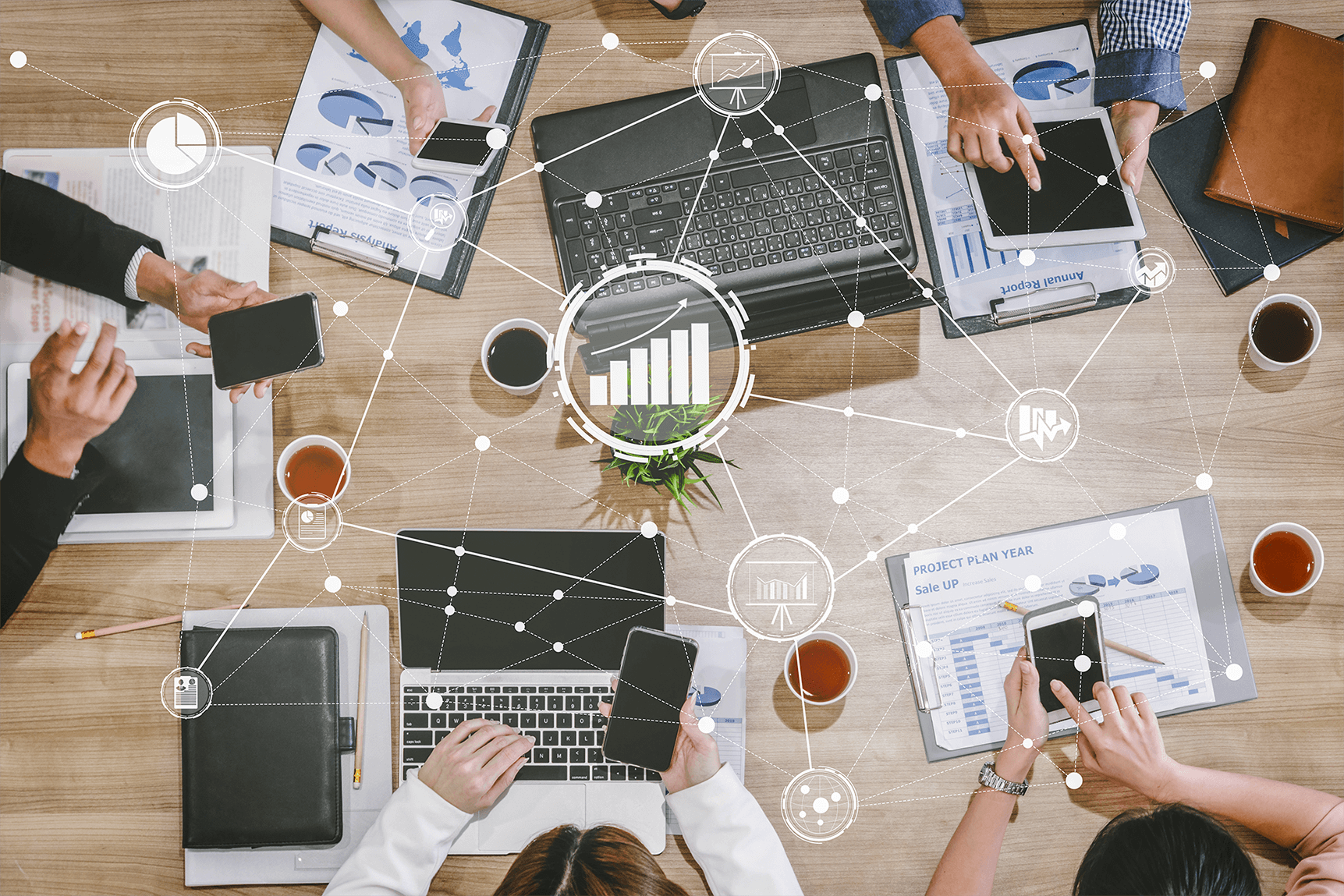Like everything else in life, we all know the world of work is constantly changing. 2020 was undoubtedly a year that brought an unprecedented and unanticipated rate of change in how we work. The sudden transition from working in traditional offices to remote work created a wide range of challenges, from overextended IT departments to employees managing the complexities of working from home while managing their children’s remote schooling. Organizations struggled with VPN bandwidth, allowing remote access to information employees needed, deploying and managing conferencing tools like Zoom, Google Meet and Microsoft Teams. Employees had to quickly adjust to new workstyles along with a complete redefinition of work-life balance and the accompanying dogs barking and kids yelling while on calls.
Work, life, health, safety and well-being are all inextricably linked. Work will never be the same again and has definitely become more dynamic. This means the workspace itself needs to change. The physical office will not go away, but people may not go into the office every day, and they may not have fixed hours. The way people work will be different. Organizations need to recognize these factors and look deeply into the fundamentals with a common denominator in mind – people. Cultural transformation in concert with technological transformation will be critical to be successful in this new workstyle and will enable a more resilient and adaptable organization that better serves customers and stakeholders.

A Digital-first Approach
The future of work is about better connecting people, technology and information to drive transformation. Technologies are rapidly changing all facets of work – the who, what, where and how – and enable working together, separately yet in real time. But, it’s never just about the technology. The accelerated digital work environment is requiring more emphasis on the need and accommodation for human connections more than ever before – the human-to-human experience. According to IDC, by 2022, 70% of all organizations will have accelerated use of digital technologies, transforming current processes to drive employee productivity, customer engagement and business resiliency. Additionally, organizations will invest heavily in digitizing employee experience in 2021, transforming the relationship between employers and employees. A digital-first approach will need to consider these essential components:
Reactions to a changing workforce and the operations around it will accelerate technology investments, and business models will need to change to adapt for seamless integration.
Work Model Reinvention
With 20-40 percent of employees expected to continue to work remotely full-time, organizations need to reinvest in the whole transformative process and in their employees – specifically, how employees need to work and what access they have to data. Employee engagement and culture will be paramount for performance in the workspace. Instead of managing a team around a workday, the transition should focus on reinventing the workday around outputs. For this shift to be effective, there needs to be a culture of support and skills training, encircled in trust, driven by the whole organization and required by senior leadership from a renewed perspective. It also means there needs to be an atmosphere that fosters belonging, allowing the workforce to feel empowered and take the initiative to deliver on the results that their business needs, because collaboration around strategic programs is contingent on employee engagement. If managed effectively, employee satisfaction will improve, productivity will rise, innovation will continue and resiliency will be built for faster adaptation to any type of disruption. This, consequently, will forge the link to better customer experiences and improved customer connections for the long term.
Collaboration Equals Innovation
The people-first approach needs continuous checking to reap the benefits of an advancing, technology enabled world. The way people want to navigate the workplace, efficiently collaborate and have secure access to the right data will be key drivers. And through the data, organizations would be able to garner intelligent insights to gain a competitive advantage. Increased connectivity is imperative to make this happen. The drive to build business efficiencies and a more productive workforce cannot succeed without the required investment in developing teams and enabling them with the necessary skills and technologies. With multiple generations to consider, there will be differences in how they prefer to work, but the flexibility should be enabled with technologies. In ways never done before, deeper collaboration among employees across generations – whether onsite or offsite – will drive creativity and faster innovation. It’s more about great minds working as one, rather than many minds working individually. Collaboration equals innovation, which ultimately results in improved bottom line and progress for your organizations. Getting together and driving innovation will lead to much more customer responsiveness and more opportunities to increase revenue.
Rethink the World of Work
2020 was a unique and memorable year for all of us. It was one of reflection, considering all things important to prepare us for a better 2021 and beyond. We have to rethink strategies and priorities for the future. There will always be predictions of work trends based on anticipated market changes, but one thing remains constant in the world of work – the human factor. It’s the core driving force behind the way work gets done, and should be part of any key strategies moving forward. The future workspace is here now – connected more than ever before, providing an agile and resilient foundation. The great thing is we’re all in this together. Success isn’t a solo effort. You need the right partner for an efficient ecosystem to come into play and the ongoing support to navigate the changing landscape, capitalizing on essential trends to be more prepared for whatever the future may hold.
Rethink 2021 and the future of work with Konica Minolta. Learn more at rethinkfutureofwork.com.